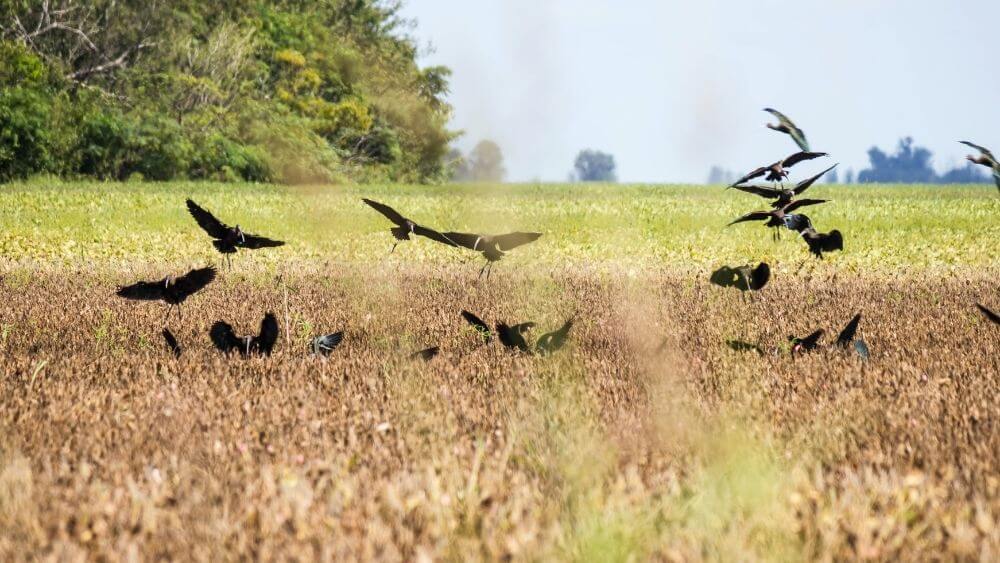How do birds fly?

Birds – the only flying animals
Birds fly by flapping their wings. Their bodies are ideal for flight because they are light and shaped to cut through the air at high speed. Birds like the kingfisher can hover mid-air by beating their wings very fast, while other birds glide on the wind by stretching their wings wide. Hummingbirds have unique abilities which allow them to even fly backwards and upside down. The design of its feather is different from that of most birds.
They have a unique ball and socket joint in their shoulder which allows them to rotate their wings in all directions. Bald eagles are one of the highest-flying birds. They can reach heights of about 14,000 feet. With their broad wingspan, they can fly higher as well as faster than most birds. These big birds use the rising air to get their altitude.
Birds are warm-blooded and lay eggs to give birth to their young ones. Ostrich is the largest living bird that can grow up to 9 feet tall. Even though ostriches have wings they cannot fly because of their high body mass. Other examples of birds that cannot fly are penguins, kiwi, emu, etc.
Contents
Characteristics of birds that help them fly
Feathery Wings
Feather is used as a rudder, which helps to maintain flight and balance in the air. These feathers also act as brakes during their landing. When a bird flaps its feathers, it pushes the air downward which helps the bird to move forward and upward.
Mighty Muscles
Birds use their strong breast muscles to flap their wings and get the desired upthrust. Apart from that, they have hollow bones which lessen their body weight.
Bony support
As discussed earlier, birds have hollow bones with air sacs. The tiny cross pieces of bones make them stronger. A rigid skeleton provides powerful flight muscles which generated the required upthrust.
Folding wings
The top layer of feathers gives the wings its smooth shape. Birds use their wing muscles to fold their wings or alter their shape. This helps birds change their direction while flying. They can also partially fold their wings to pass through the air with the least possible resistance.
Tail Feather
Birds’ tail feathers can spread out to help them slow down for landing. They are designed to push against the wind to create the lift. Tail feathers also help pitch their bodies and adjust their altitude.
Concept of light bones
Flying uses a lot of energy but birds have light bodies to make flight easier. Their biggest bones are hollow to conserve weight and their bones have strong supports to stop them from breaking. This overall combination allows the body to be light yet strong, making it perfect for flight.
Fun-Facts
- The fastest flappers are tiny bee hummingbirds. They can beat their wings 80 times a second. They are also the smallest birds in the world.
- Ostriches have the largest eyes in any mammal on land. They also lay the largest eggs.
Objective Questions
- Which is the smallest bird?
(a) Hummingbird
(b) Kingfisher
(c) Ostrich
(d) Crow - Which among the following birds fly at a high altitude?
(a) Pigeon
(b) Sparrow
(c) Eagle
(d) Woodpecker - Which of the following is the largest living bird?
(a) Ostrich
(b) Eagle
(c) Kiwi
(d) None of these - Which of the following parts are not possessed by birds?
(a) Muscles
(b) Teeth
(c) Tail Feather
(d) Wings - Which bird can fly backwards?
(a) Hummingbird
(b) Eagle
(c) Penguin
(d) None of these
Quiz
- Birds use their strong breast muscles to flap their wings. (T/F)
- Ostriches have the largest eyes of any mammal on land. (T/F)
- Birds have hollow bones. (T/F)
- Birds do not have muscles. (T/F)
- Bald Eagles can reach heights of about 1,00,000 feet. (T/F)






Responses